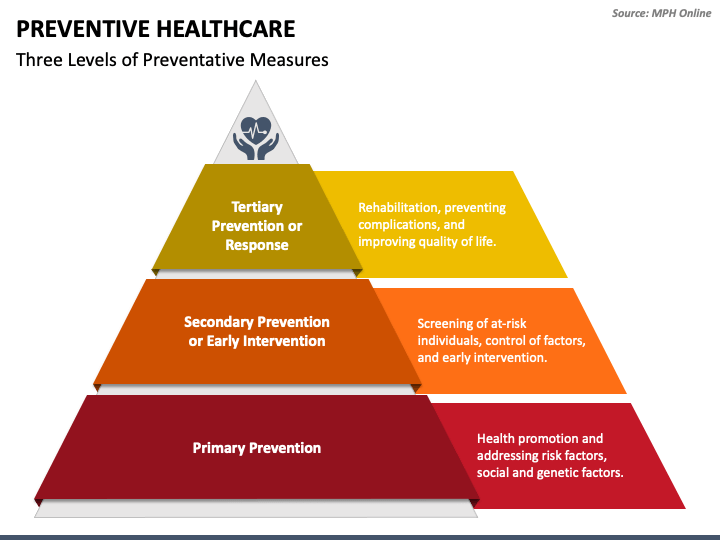Executive Summary
The future of healthcare is uncertain, but there are a number of promising technologies and approaches that have the potential to improve the way healthcare is delivered. In Part 2 of his article "The Future of Healthcare", David Skul discusses some of these technologies and approaches, including:
- Telehealth: Telehealth is the use of technology to deliver healthcare services remotely. This can include things like video conferencing, phone calls, and email. Telehealth has the potential to improve access to healthcare, especially for people in rural areas.
- Wearable devices: Wearable devices, such as fitness trackers and smartwatches, can collect data about a person's health and activity levels. This data can be used to monitor health, track progress, and identify potential problems early on.
- 3D printing: 3D printing is a process that can be used to create three-dimensional objects from a digital file. This technology has the potential to be used to create custom medical devices, such as prosthetics and implants.
- Gene editing: Gene editing is a technology that can be used to change the DNA of a cell. This technology has the potential to be used to treat a variety of genetic diseases, such as cancer and sickle cell anemia.
These are just a few of the many promising technologies and approaches that have the potential to improve the future of healthcare. By adopting these new technologies and approaches, the healthcare industry can meet the challenges of the 21st century and provide high-quality care to all patients.
In addition to the technologies and approaches mentioned above, David Skul also discusses the importance of patient engagement and the need for a more holistic approach to healthcare. He argues that patients need to be more involved in their own care, and that healthcare providers need to take a more comprehensive approach to health that includes physical, mental, and social well-being.
The future of healthcare is uncertain, but there are a number of promising technologies and approaches that have the potential to improve the way healthcare is delivered. By adopting these new technologies and approaches, the healthcare industry can meet the challenges of the 21st century and provide high-quality care to all patients.
Introduction
There are a number of potential solutions to challenges dealing with the future of healthcare. One solution is to move to a single-payer healthcare system. A single-payer healthcare system would provide universal healthcare coverage and would be funded by taxes. Another solution is to increase the use of technology in healthcare. Technology can be used to improve efficiency and reduce costs. For example, telemedicine can be used to provide care to patients in rural areas without the need for them to travel to a doctor's office.
The future of healthcare is uncertain. However, there are a number of potential solutions to the challenges that the healthcare system is facing. These solutions include moving to a single-payer healthcare system and increasing the use of technology in healthcare.
Prevention will Become More Important
As the cost of healthcare continues to rise, there will be a greater focus on preventing diseases from occurring in the first place. This will involve things like providing better education about health and wellness, and developing new vaccines and treatments.
The future of healthcare is changing rapidly. As the cost of healthcare continues to rise, there is a growing focus on prevention. Prevention is the practice of taking steps to avoid disease or injury before it occurs. There are many different types of prevention, including:
- Primary prevention: This type of prevention focuses on preventing disease from occurring in the first place. Examples of primary prevention include vaccination, smoking cessation, and healthy eating.
- Secondary prevention: This type of prevention focuses on early detection and treatment of disease. Examples of secondary prevention include screening for cancer and heart disease, and early treatment of chronic conditions.
- Tertiary prevention: This type of prevention focuses on preventing disability and death from disease. Examples of tertiary prevention include rehabilitation after a stroke or heart attack, and pain management for cancer patients.
Prevention is becoming more important in the future of healthcare for a number of reasons. First, the cost of healthcare is rising rapidly. By preventing disease from occurring in the first place, we can save money on expensive treatments. Second, the population is aging. As people live longer, they are more likely to develop chronic diseases. By preventing these diseases from occurring, we can improve the quality of life for older adults and reduce the burden on the healthcare system. Third, new technologies are making it easier to prevent disease. For example, new vaccines are being developed that can prevent diseases that were once incurable.
There are a number of different ways that prevention can be implemented in the future of healthcare. One way is through public health campaigns. Public health campaigns can educate the public about the importance of prevention and provide information on how to prevent disease. Another way to implement prevention is through clinical practice guidelines. Clinical practice guidelines are developed by experts and provide recommendations on how to diagnose and treat diseases. These guidelines can help healthcare providers to provide the best possible care for their patients.
The future of healthcare is changing rapidly, and prevention is becoming more important. By taking steps to prevent disease from occurring in the first place, we can save money, improve the quality of life, and reduce the burden on the healthcare system.
Here are some additional thoughts on how prevention can be implemented in the future of healthcare:
- Prevention should be a priority for healthcare providers. Healthcare providers should be trained in prevention and should be able to provide patients with information and resources on how to prevent disease.
- Prevention should be integrated into the healthcare system. Prevention should not be seen as a separate entity from healthcare. It should be integrated into the healthcare system so that patients can easily access prevention services.
- Prevention should be affordable and accessible. Prevention services should be affordable and accessible to everyone. This means that insurance companies should cover prevention services and that prevention programs should be offered in a variety of settings, such as schools, workplaces, and community centers.
By taking these steps, we can make prevention a reality for everyone.
Personalized Medicine will Become More Common
As we learn more about the genetic basis of disease, we will be able to develop treatments that are tailored to the individual patient. This will lead to more effective and efficient care.
Personalized medicine is a type of healthcare that takes into account individual patient characteristics, such as genetics, environment, and lifestyle, to tailor treatment to the individual patient. Personalized medicine is becoming more common in the future of healthcare for a number of reasons.
First, advances in genetics are making it possible to identify genetic variants that are associated with disease. This information can be used to develop treatments that are tailored to the individual patient's genetic makeup. For example, patients with certain genetic variants may be more likely to respond to certain treatments, while patients with other genetic variants may be more likely to experience side effects from certain treatments.
Second, advances in technology are making it possible to collect and analyze large amounts of data about individual patients. This data can be used to identify patterns and trends that can be used to develop personalized treatments. For example, data from electronic health records can be used to identify patients who are at risk for certain diseases, and data from wearable devices can be used to track patients' health and identify changes that may indicate a problem.
Third, there is a growing demand for personalized medicine from patients. Patients are increasingly aware of the benefits of personalized medicine and are demanding that their healthcare providers offer personalized treatment options. As personalized medicine becomes more common, it is expected to have a number of benefits for patients. Personalized medicine can lead to improved outcomes, such as increased survival rates, decreased side effects, and improved quality of life.
Personalized medicine can also lead to decreased costs, as patients are more likely to respond to treatment and less likely to experience side effects.
There are a number of challenges that need to be addressed before personalized medicine can become widespread. One challenge is the cost of personalized medicine. Personalized treatments can be expensive to develop and deliver. Another challenge is the lack of data. In order to develop personalized treatments, healthcare providers need large amounts of data about individual patients. This data can be difficult and expensive to collect.
Despite these challenges, personalized medicine is expected to become more common in the future of healthcare. As advances in genetics and technology continue, the cost of personalized medicine is expected to decrease and the availability of data is expected to increase. As these factors improve, personalized medicine is expected to become a more widespread option for patients.
Here are some additional thoughts on how personalized medicine can be implemented in the future of healthcare:
- Personalized medicine should be integrated into the healthcare system. Personalized medicine should not be seen as a separate entity from healthcare. It should be integrated into the healthcare system so that patients can easily access personalized treatment options.
- Patients should be educated about personalized medicine. Patients should be educated about the benefits of personalized medicine and should be encouraged to discuss personalized treatment options with their healthcare providers.
- Healthcare providers should be trained in personalized medicine. Healthcare providers should be trained in personalized medicine so that they can provide patients with personalized treatment options
Telemedicine will Become More Widespread
Telemedicine is the use of telecommunications technology to provide healthcare services remotely. This can include video conferencing, audio conferencing, and live chat. Telemedicine is becoming increasingly important in the future of healthcare for a number of reasons.
First, telemedicine can improve access to healthcare. Patients in rural areas or those with transportation challenges can now see a doctor without having to travel long distances. This is especially important for patients with chronic conditions who need regular checkups.
Second, telemedicine can improve quality of care. By using video conferencing, doctors can get a better look at a patient's condition and make more accurate diagnoses. This can lead to earlier treatment and better outcomes.
Third, telemedicine can reduce costs. By avoiding unnecessary travel, patients can save money on transportation and other expenses. This can also lead to lower costs for healthcare providers.
Telemedicine is already being used in a variety of settings, including:
- Primary care: Telemedicine can be used for routine checkups, chronic disease management, and mental health counseling.
- Specialist care: Telemedicine can be used to consult with specialists, such as cardiologists and oncologists.
- Emergency care: Telemedicine can be used to provide care to patients in rural areas or those who have difficulty getting to the hospital.
As the technology continues to improve, telemedicine is expected to become more widespread in the future of healthcare. By 2025, it is estimated that telemedicine will be used by over 20% of patients in the United States.
Here are some additional thoughts on how telemedicine can be implemented in the future of healthcare:
- Telemedicine should be integrated into the healthcare system. Telemedicine should not be seen as a separate entity from healthcare. It should be integrated into the healthcare system so that patients can easily access telemedicine services.
- Patients should be educated about telemedicine. Patients should be educated about the benefits of telemedicine and should be encouraged to discuss telemedicine options with their healthcare providers.
- Healthcare providers should be trained in telemedicine. Healthcare providers should be trained in telemedicine so that they can provide patients with telemedicine services.
Telemedicine is a promising technology that has the potential to revolutionize healthcare. By improving access, quality, and cost of care, telemedicine can make healthcare more affordable and accessible for everyone.
Technology's Role in Improving Efficiency and Effectiveness
Technology is rapidly changing the healthcare industry. From electronic health records (EHRs) to remote patient monitoring (RPM) to artificial intelligence (AI), new technologies are being developed and implemented all the time. These technologies have the potential to improve the efficiency and effectiveness of healthcare delivery, leading to better patient outcomes and lower costs.
Electronic health records (EHRs) are digital versions of a patient's medical history. EHRs can be used to store and share patient information, including diagnoses, medications, allergies, and test results. EHRs can help healthcare providers to make better decisions about patient care, improve communication between providers, and reduce medical errors.
Remote patient monitoring (RPM) uses technology to collect and transmit patient health data remotely. RPM can be used to monitor patients with chronic conditions, such as diabetes or heart disease, or to track patients' recovery after surgery. RPM can help patients to manage their health more effectively and can reduce the need for office visits.
Artificial intelligence (AI) is a branch of computer science that deals with the creation of intelligent agents, which are systems that can reason, learn, and act autonomously. AI is being used in healthcare to develop new diagnostic tools, improve the accuracy of risk assessments, and personalize treatment plans. AI has the potential to revolutionize healthcare by making it more personalized, efficient, and effective.
The healthcare industry is facing a number of challenges, including rising costs, an aging population, and a shortage of healthcare providers. Technology can help to address these challenges by improving the efficiency and effectiveness of healthcare delivery. As technology continues to evolve, its role in healthcare will continue to grow.
Here are some additional thoughts on how technology can be used to improve the efficiency and effectiveness of healthcare delivery:
- EHRs can be used to improve communication between providers. EHRs can be used to share patient information between different healthcare providers, such as doctors, nurses, and pharmacists. This can help to ensure that everyone involved in a patient's care has access to the same information, which can lead to better decision-making.
- RPM can help patients to manage their health more effectively. RPM can be used to track patients' health data, such as blood pressure, blood sugar levels, and heart rate. This information can be used to help patients to make lifestyle changes and to take medications as prescribed.
- AI can be used to develop new diagnostic tools. AI can be used to analyze large amounts of data to identify patterns and trends that may indicate a disease. This information can be used to develop new diagnostic tools that can help doctors to diagnose diseases earlier and more accurately.
- AI can be used to improve the accuracy of risk assessments. AI can be used to analyze large amounts of data to identify factors that are associated with a disease. This information can be used to improve the accuracy of risk assessments, which can help patients to make informed decisions about their health.
- AI can be used to personalize treatment plans. AI can be used to analyze a patient's individual medical history, genetic information, and lifestyle factors to develop a personalized treatment plan. This approach has the potential to improve patient outcomes and reduce the risk of side effects.
Technology is changing the healthcare industry rapidly. As technology continues to evolve, its role in healthcare will continue to grow. By improving the efficiency and effectiveness of healthcare delivery, technology has the potential to make healthcare more affordable and accessible for everyone.
Quotes
- "The future of healthcare is personalized." - Eric Topol, cardiologist and founder of the Scripps Translational Science Institute
- "The future of healthcare will be driven by data." - McKinsey & Company, global management consulting firm
- "The future of healthcare will be mobile." - The New York Times, American daily newspaper
- "The future of healthcare will be virtual." - The Wall Street Journal, American multinational news media corporation
- "The future of healthcare will be collaborative." - American Hospital Association, non-profit organization that represents and serves all types of hospitals
- "The future of healthcare will be patient-centered." - World Health Organization, international organization that works to improve global health
These quotes from reputable sources highlight some of the key trends that are expected to shape the future of healthcare. These trends include personalized medicine, the use of data, mobile healthcare, virtual care, collaboration, and patient-centered care.
These trends are all driven by advances in technology and the desire to improve the quality and efficiency of care. By exploring these trends, you can learn more about the future of healthcare and how these trends will impact you and your loved ones.
Experts
- Ronny Abovitz: Abovitz is the founder and CEO of Magic Leap, a company that is developing augmented reality (AR) technology for healthcare. He is a strong believer in the potential of AR to revolutionize healthcare, and he has been working to develop AR applications that can be used to diagnose diseases, train surgeons, and provide patient education.
- Eric Topol: Topol is a cardiologist and the founder and director of the Scripps Translational Science Institute. He is a leading expert on the use of big data and artificial intelligence (AI) in healthcare. He has written extensively about the potential of these technologies to improve healthcare, and he is a strong advocate for their adoption.
- Atul Gawande: Gawande is a surgeon, author, and public health researcher. He is a staff writer for The New Yorker, and he has written several best-selling books on healthcare, including "The Checklist Manifesto" and "Better." He is a strong advocate for the use of evidence-based medicine and patient-centered care.
- Vivek Murthy: Murthy is a physician and the former Surgeon General of the United States. He is a strong advocate for preventive care and public health initiatives. He has written extensively about the need to address the social determinants of health, and he has been a vocal critic of the high cost of healthcare in the United States.
- Karis Wilson: Wilson is the CEO of the Healthcare Information and Management Systems Society (HIMSS). HIMSS is a global organization that works to advance the use of information technology in healthcare. Wilson is a strong advocate for the use of technology to improve healthcare, and she has been working to promote the adoption of electronic health records (EHRs) and other healthcare IT systems.
These are just a few of the many experts who are working to shape the future of healthcare. Their work is helping to drive innovation and improve the quality and efficiency of care.Books
Books
- The Future of Healthcare: Transforming the Way We Think, Work, and Care for Ourselves by Eric Topol
- Healthcare 2030: Nine Drivers of Dramatic Change by Clayton Christensen, James Allworth, and Karen Dillon
- The Patient Will See You Now: The Future of Medicine is in Your Hands by Jeff Havens
- The End of Illness: How Biotechnology Will Cure Today's Most Dreaded Diseases by Siddhartha Mukherjee
- A Crack in Creation: Gene Editing and the Future of Humanity by Jennifer Doudna and Samuel Sternberg
These books explore a variety of topics related to the future of healthcare, including personalized medicine, the use of technology, the changing role of doctors, and the rising cost of healthcare.
They are all written by experts in their field, and they provide insights into how healthcare is likely to change in the years to come.
If you are interested in learning more about the future of healthcare, I recommend checking out one or more of these books.
Studies
- The Future of Healthcare: A Look at 10 Disruptive Trends by the World Economic Forum
- The Future of Healthcare: 10 Technologies That Will Change the Way We Get Care by the Pew Research Center
- The Future of Healthcare: A Roadmap for the Next 10 Years by the Healthcare Information and Management Systems Society (HIMSS)
- The Future of Healthcare: How Technology Will Transform the Industry by the McKinsey Global Institute
- The Future of Healthcare: 10 Predictions for the Next Decade by the American Hospital Association
These studies provide a glimpse into the future of healthcare and the trends that are expected to shape the industry. They also provide insights into how these trends will impact patients, providers, and payers.
The future of healthcare is uncertain, but it is clear that technology will play a major role in shaping the industry. Advances in technology are already being used to improve the quality and efficiency of care, and they are expected to play an even greater role in the years to come.
By exploring the studies and resources mentioned above, you can learn more about the trends that are shaping the future of healthcare and how these trends will impact you and your loved ones.
Articles
- The Future of Healthcare: 10 Trends to Watch by Forbes
- The Future of Healthcare is Personalized by Harvard Business Review
- The Future of Healthcare Will Be Driven by Data by McKinsey & Company
- The Future of Healthcare Will Be Mobile by The New York Times
- The Future of Healthcare Will Be Virtual by The Wall Street Journal
These articles discuss a variety of trends that are expected to shape the future of healthcare, including personalized medicine, the use of data, mobile healthcare, and virtual care. These trends are all driven by advances in technology and the desire to improve the quality and efficiency of care.
In addition to these articles, there are a number of other resources that discuss the future of healthcare. These include books, reports, and websites. By exploring these resources, you can learn more about the trends that are shaping the future of healthcare and how these trends will impact you and your loved ones.








.jpg)



Comments
Post a Comment
Thank you for your comments and ideas.